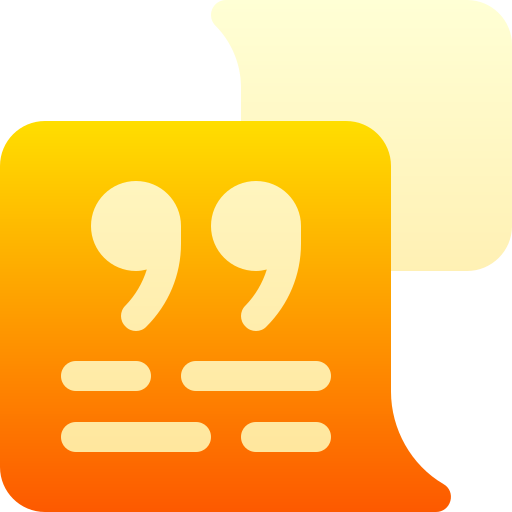
General
How to Decode Cover Letters and Hire Top Talent
June 23, 2024
Guest Post
Content Writer
Hiring top talent can be a bit like speed dating—you are trying to really get to know a person and determine whether they’d be a good fit in a short period of time. Cover letters are one of your first impressions of a potential hire, but it can take some digging to “decode” the information they contain. Below, we will discuss the use of artificial intelligence (AI) in candidate cover letters and what you should look for in a cover letter—both hidden gems and red flags.
Make the right hires every time
Learn how our award-winning ATS can help you use AI and automation to save time, eliminate manual tasks, and hire at an enterprise scale – but without the complexity.
Request a free demoTable of Contents
Should I Worry About AI-Generated Cover Letters?


If you performed an online search for the term “cover letter,” many of the top search results would be AI cover letter generators. Are you worried about candidates using ChatGPT to write a cover letter? If so, rest assured that they are often easy to recognize. How?
Life Hacker reports on the finesse that AI cover letters are missing: the technology can only reiterate what you’ve fed it from a resume. The result is that AI cover letters are often redundant restatements of what the resume includes.
On the other hand, AI text generators occasionally “hallucinate,” creating false information. Hopefully, candidates using AI have proofread their cover letters and eliminated this, but if something doesn’t sound reasonable, don’t hesitate to ask for clarification.
Why do candidates turn to AI instead of writing their own cover letters? The reasons can be complex and varied. Some have spent months applying to many jobs, and they’re simply burned out on writing one tailored cover letter after another. Others may lack confidence in their writing skills. Skill others may be juggling other responsibilities and have turned to AI to save time. A small minority may feel like their cover letters don’t matter, and thus decline to put adequate effort into it.
The bottom line is that you shouldn’t write off a qualified candidate just because they chose to generate a cover letter using AI. But you should also require them to demonstrate their skills before making them an offer—especially if written communication skills are a must for the position.
What to Look for in Candidate Cover Letters


Whether or not a potential hire has utilized AI in the creation of their cover letters, there are a few things you should look for. You may even use AI-powered tools to sift through many candidates for a good fit.
Finding the Ideal Fit
If your company posts job openings online, as most businesses today do, you may receive hundreds or even thousands of applications for a single position. And if you have dozens of open positions at once—you can see how the workload of the hiring manager or human resources department could expand exponentially.
Many companies turn to recruitment automation software as a solution. Often called applicant tracking systems (ATS), this software can search cover letters and resumes for pre-programmed keywords, such as skills, years of experience, or educational requirements. It then returns a shortlist of applicants who best meet these requirements.
After the ATS has done its job, it is time for human eyes to do what AI cannot. Consider the following tips for finding “hidden gems” among your applicants, uncovering red flags, and disregarding false alarms.
Mine for Hidden Gems
The cover letter is a place for elaborating on the brief statements made in the resume. Candidates can use this document to draw connections between their past experiences and the position they are applying to. But these may not always be stated obviously. Read between the lines in search of the following hidden gems.
Genuine alignment with company values. Does your company display strong values? Do you have a bent toward sustainability or specific social issues? Are innovation, diversity, leadership, or honesty front of mind?
You will no doubt look for candidates whose values align closely with those of the company culture. Many candidates may state in their cover letter that they appreciate or reflect those values, but how can you be sure it’s more than ingenuous flattery?
First, look for indications that the candidate really understands the company’s values and that they are not just parroting what they found on the company website. Then, pick out examples they’ve given of sharing those values. Have they worked on personal projects or with other groups who support those values?
Enthusiasm and resourcefulness. “Listen” for the applicant’s voice in their cover letter. Try to discern their personality and enthusiasm for the position. Why do they want the job? What motivates them? An enthusiastic employee will likely be more content and productive.
Additionally, look for evidence of self-motivation and resourcefulness. This can include continuing education, personal projects, volunteering, or other activities that demonstrate the candidate’s desire to continue learning and to do more than the bare minimum.
Diamonds in the rough. You may not find the “perfect” candidate, especially for a highly specialized role. But you may find applicants that are like uncut diamonds—they need some training and guidance, but they have a foundation that could be built on. Consider hiring a motivated candidate who has some but not all of the skills needed, offering training or additional schooling as part of the onboarding process.
Red Flags to Be Wary of—And Those to Disregard
Above, we compared searching for a new hire to dating. While dating, there are no doubt “red flags” that indicate you wouldn’t get along well with this person—you wouldn’t want to marry them. Likewise, there are red flags you should look for that could signal future issues should the applicant become an employee.
In the cover letter, be wary of red flags such as the following:
- Instructions not followed. This can indicate that the individual does not follow instructions well or that they do not demonstrate good attention to detail.
- Major typographical errors. A cover letter that is replete with spelling, grammar, and punctuation errors, or that is formatted poorly to the point of being unreadable can indicate that the candidate lacks basic computer skills, as a program like Grammarly would easily clear up such errors. It can also suggest a lack of attention to detail or a haphazard attitude toward tasks.
- Use of slang or unprofessional speech. If they included it in a professional document, they would no doubt speak this way in person. If it doesn’t fit with your company’s values, consider it a red flag.


“Details create the big picture”
Sanford I. Weill
There are also several traditional “red flags” that you probably shouldn’t worry about. These include:
- Employment gaps. It was once a rule of thumb that long employment gaps indicated unreliability. Since the COVID-19 pandemic, however, this thinking has become obsolete. In addition to pandemic-related gaps, some people may take time to raise a family, care for sick family members, travel, write a book, go back to school, or care for their own mental or physical health. Rather than dismiss candidates with career gaps, try to discover what unique skills or abilities these sabbaticals may have entailed.
- Past criminal records. While the cover letter is not likely to report imprisonment directly, it may note an employment gap. Historically, most businesses have shied away from giving formerly incarcerated individuals a second chance. Doing so, however, may entitle the employer to certain tax credits. Business Insider reports that employees with a criminal record are fractionally more productive than those with a clean record, a motivation possibly linked with the difficulty of finding a job. Finally, Greater Boston Legal Services states that “no studies show that hiring workers with criminal records contributes to increased crime, violence, theft, or dishonesty in the workplace.”
- Lack of career growth. Some sources still recommend avoiding candidates who don’t display career development from entry-level roles to positions of more responsibility. This makes sense if you are hiring for a leadership role, but could otherwise cause you to overlook talent. There are many personal, environmental, and professional reasons why an employee might decline promotions or stay in the same position without outwardly observable advancement.
If any of your top candidates present these former red flags, talk to them about it during the interview process. You may find that employment gaps and other issues have simple explanations and do not present a problem.
Hire the right candidates faster
Easily collaborate with your team to evaluate candidates, gather feedback, and decide who’s the best fit, with our award-winning recruiting software.
Request a free demoKey Takeaways
When considering cover letters, look for unique, tailored documents that offer insight into the candidate’s personality and motivation. You can use software to look for necessary skills but don’t forget to dig further. Read between the lines to find out how well they align with company values and how excited they are about the position and the company mission. Don’t overlook candidates who have a firm foundation but may need a little extra training to get them up to speed.
Some cover letter red flags, such as not following the directions or leaving lots of typos, can suggest future difficulties, but don’t let outdated red flag biases color your opinion of candidates with career gaps, criminal records, or a seeming lack of career growth.
Frequently Asked Questions (FAQs) About Cover Letters
What is the purpose of a cover letter?
Cover letters serve as the first point of contact between a job applicant and a potential employer. Cover letters are more narrative than resumes alone—they should build on the content of the resume, offering insights about the candidate’s unique qualifications and motivations. They should also briefly address potential issues like career gaps or the lack of a certain qualification.
Should I require a cover letter?
You may decide not to require a cover letter for straightforward or entry-level positions if the candidates’ ability to perform the necessary tasks can be determined from the resume alone. However, cover letters can provide more nuanced information when you’re building a team or looking for a fit for a specific company culture.
Should I dismiss applications that don’t include a cover letter?
If your application instructions require a cover letter and it is omitted then, yes, you should dismiss applications that don’t include one. Ignoring the request for the cover letter can indicate the candidate has difficulty following directions. However, if your instructions did not require it, applications should not be dismissed without some consideration.
Should I dismiss AI-generated cover letters?
Some companies do not accept AI-generated application documents. If this is your preference, state it explicitly in the application instructions. Software is available that can be used to identify AI-generated content. Keep in mind, however, that such software is not foolproof.
Turn top talent to employees fast
Hire, assess, onboard and manage top talent for every job. See how Elevatus streamlines everything; from acquire to new hire.
Request a demoAuthor
Guest Post
Don't miss a thing!
Stay one step ahead. Subscribe and get the latest updates, news, and insights from Elevatus straight to your inbox.






